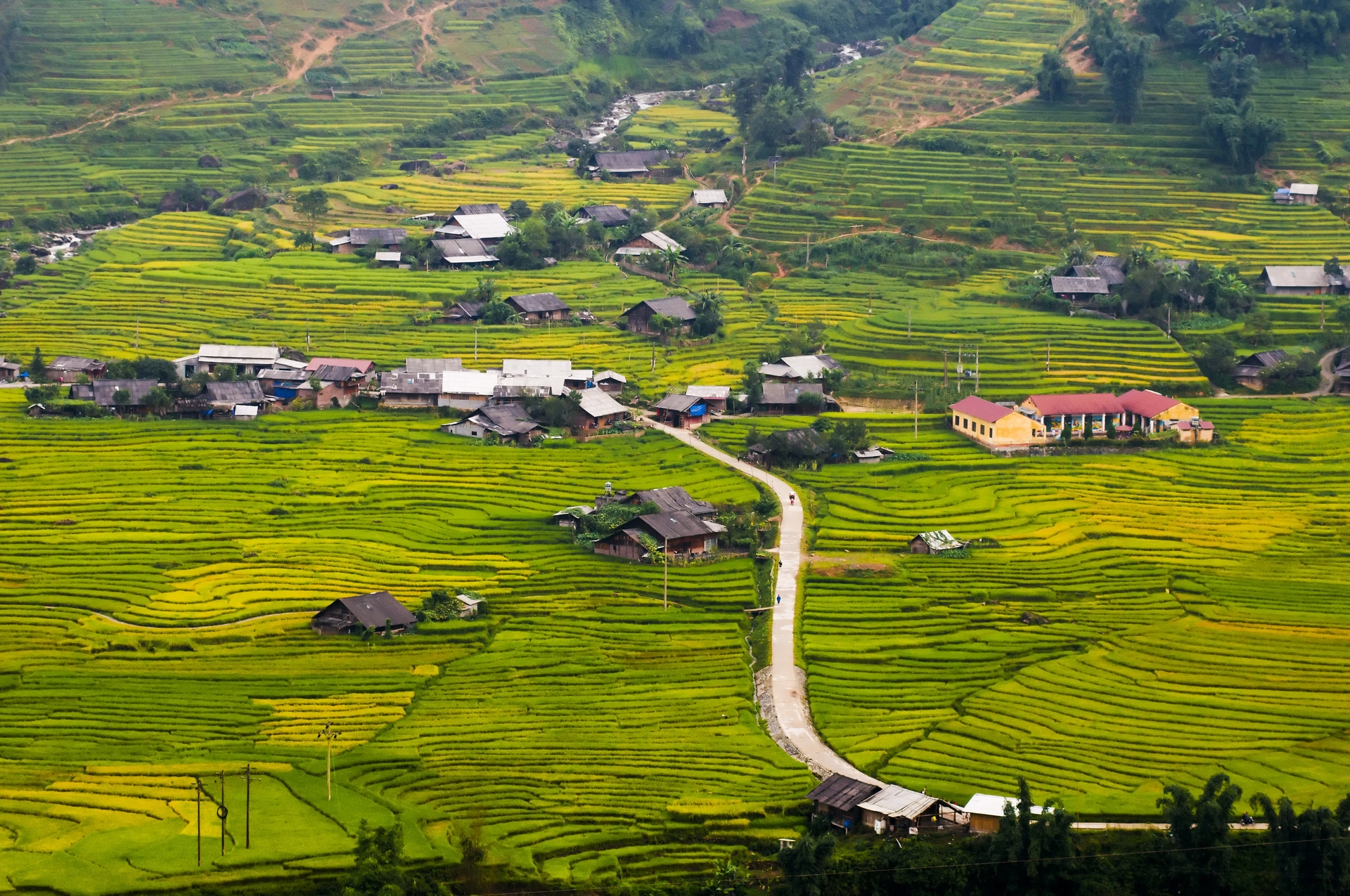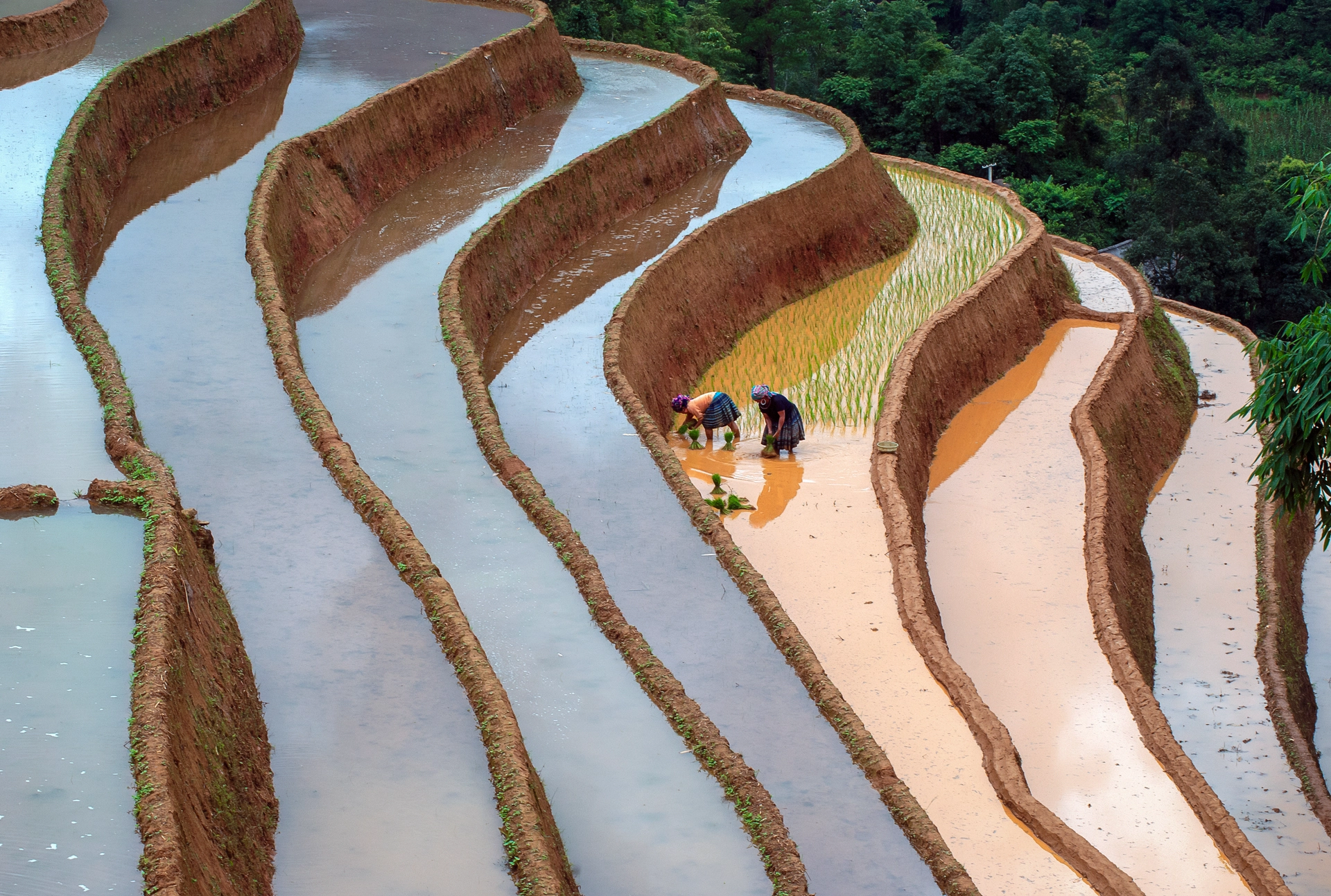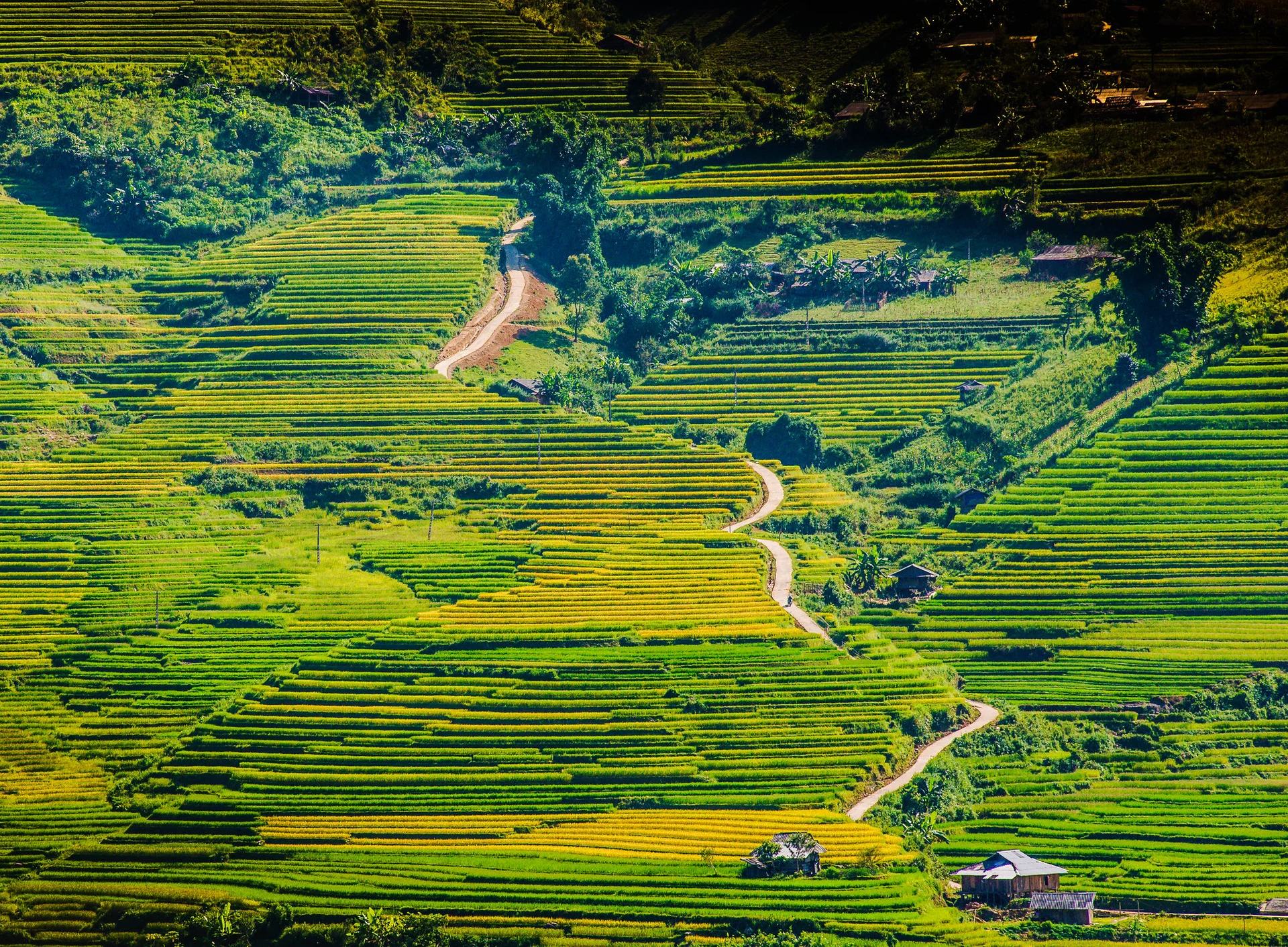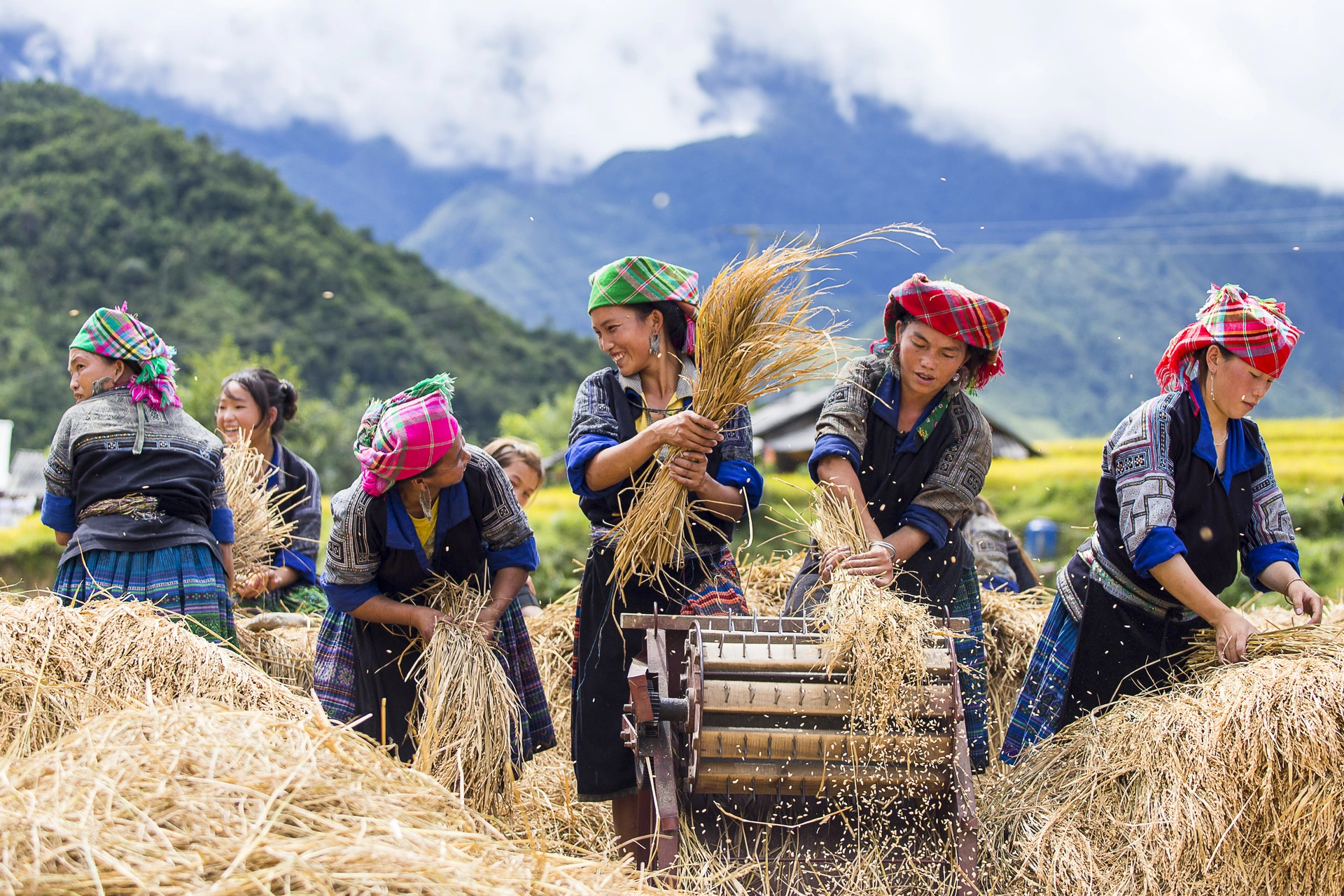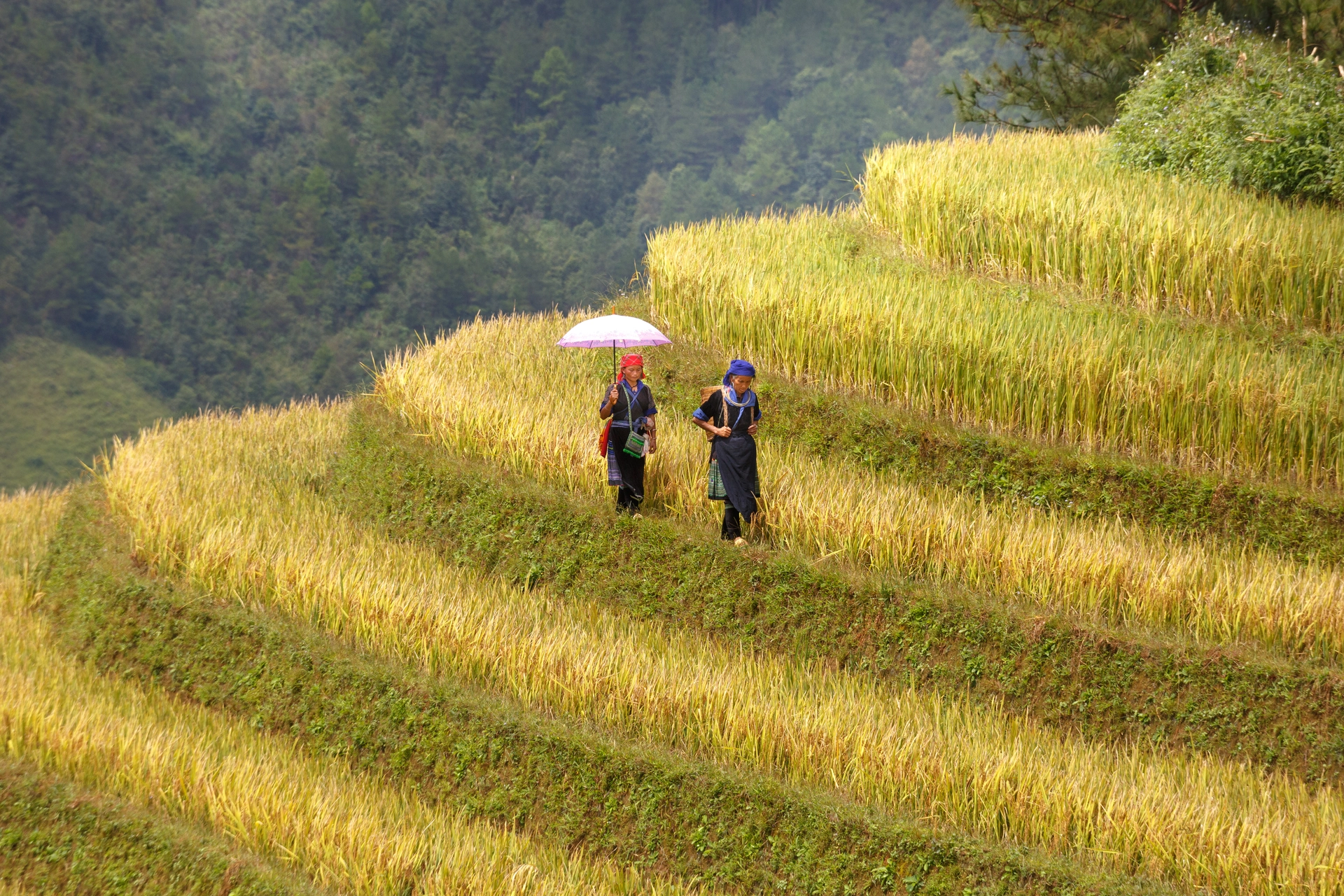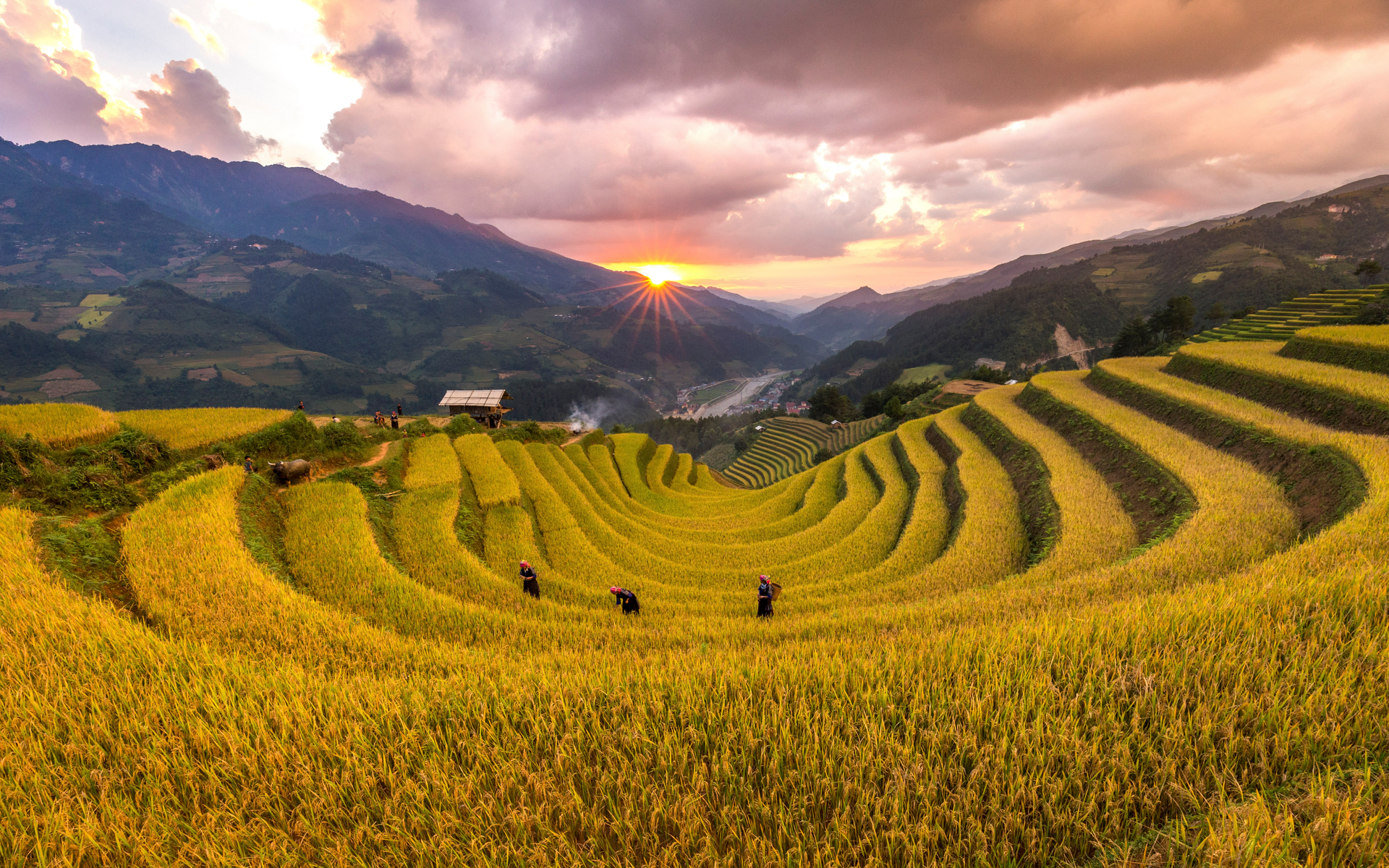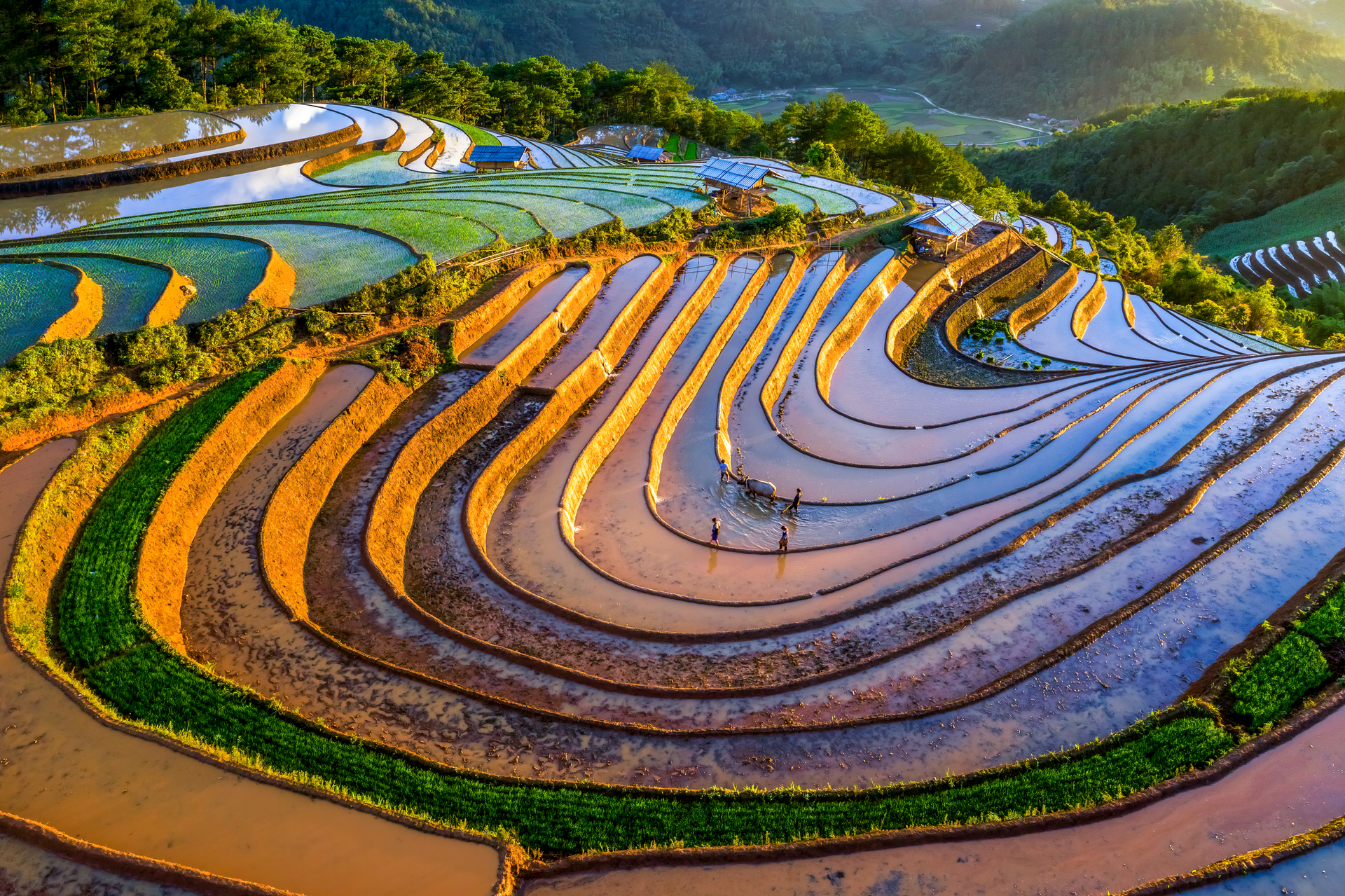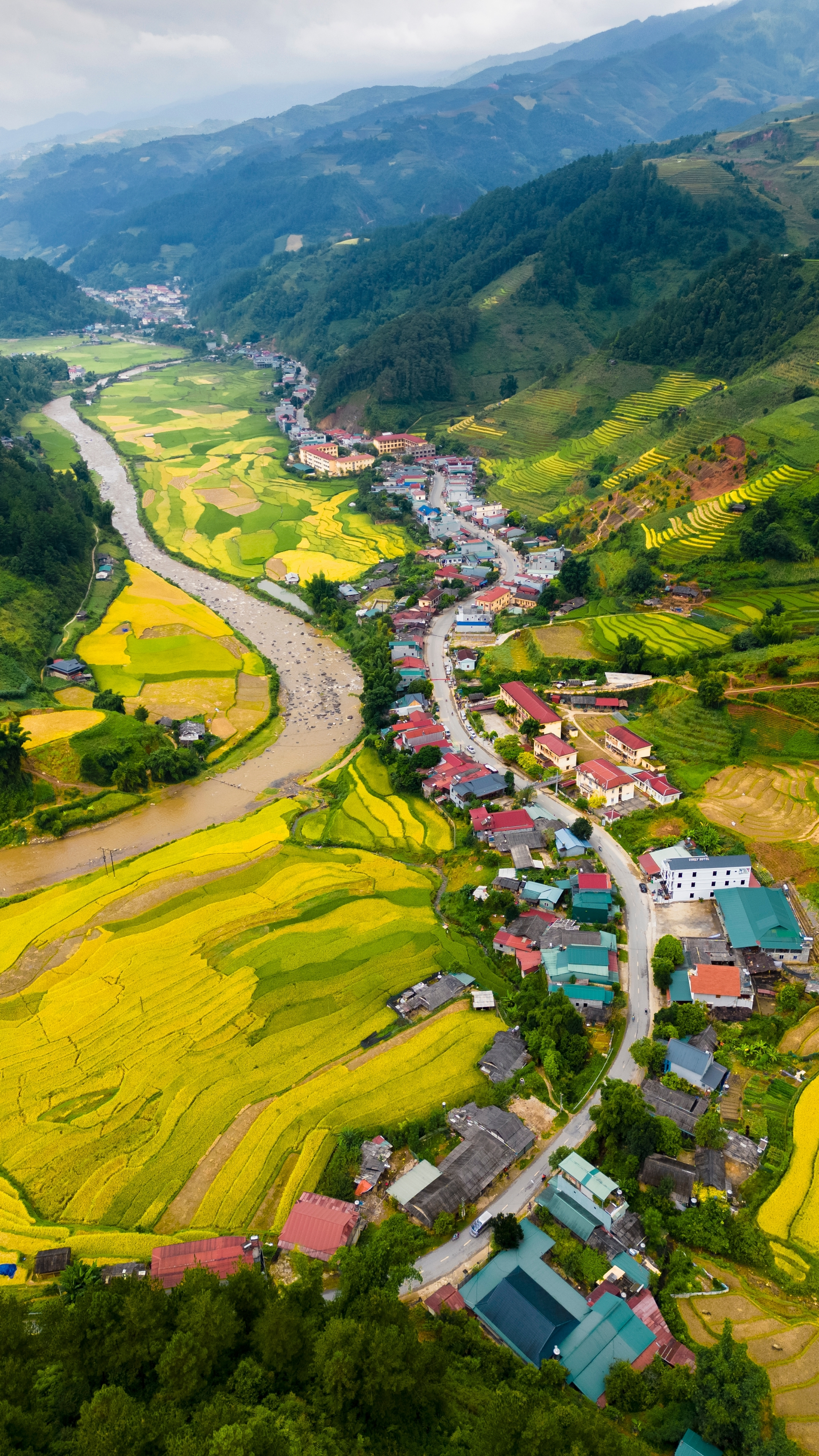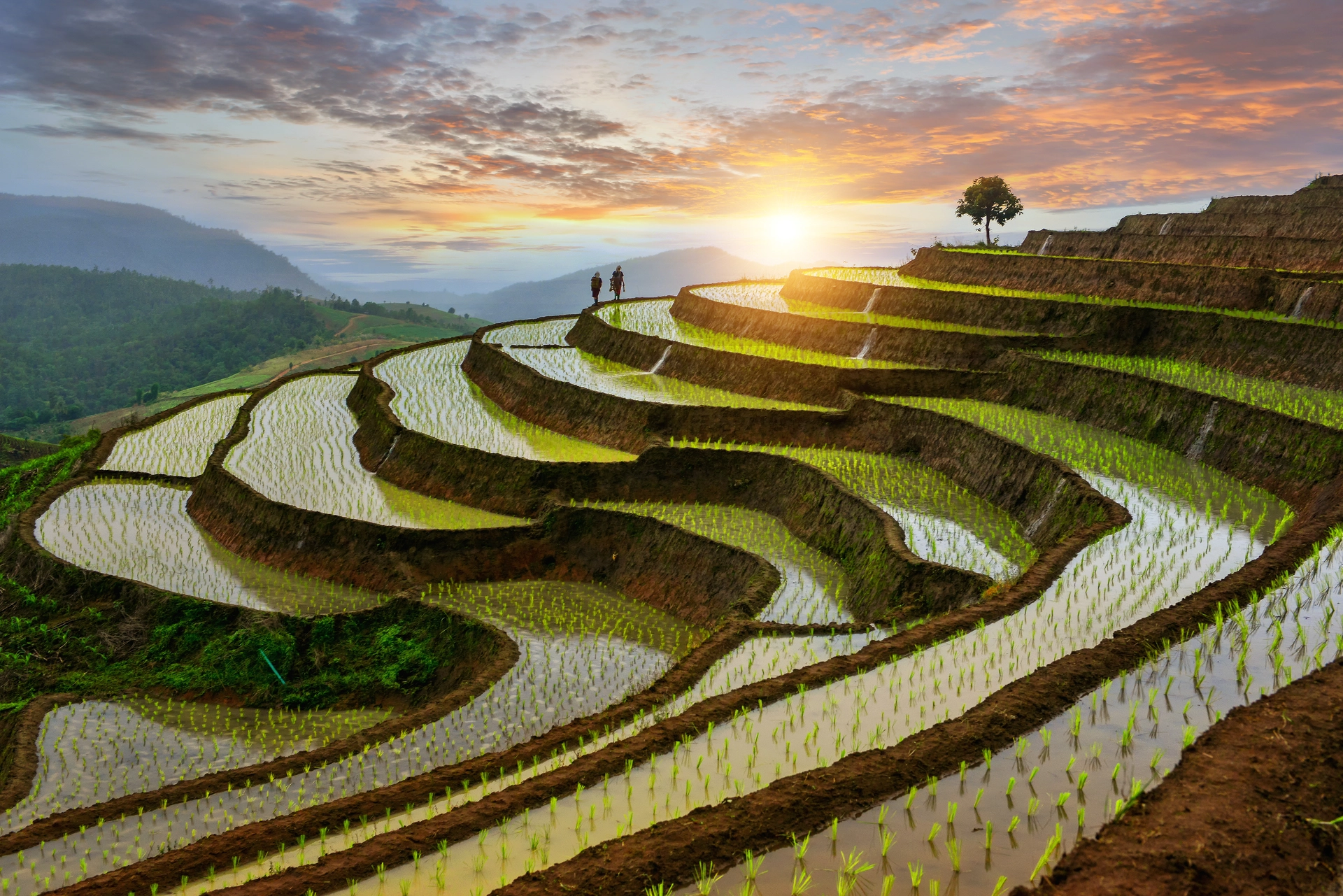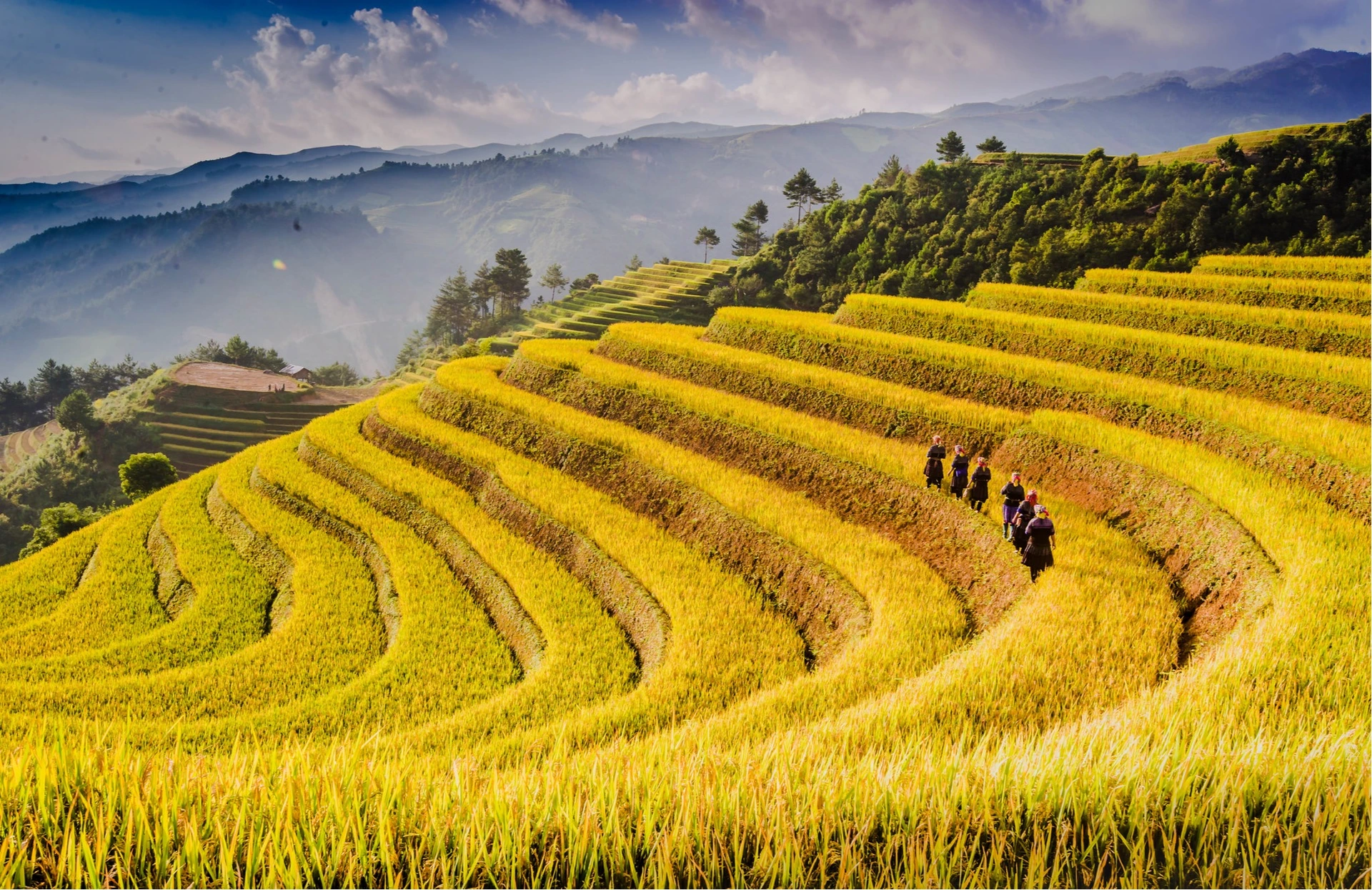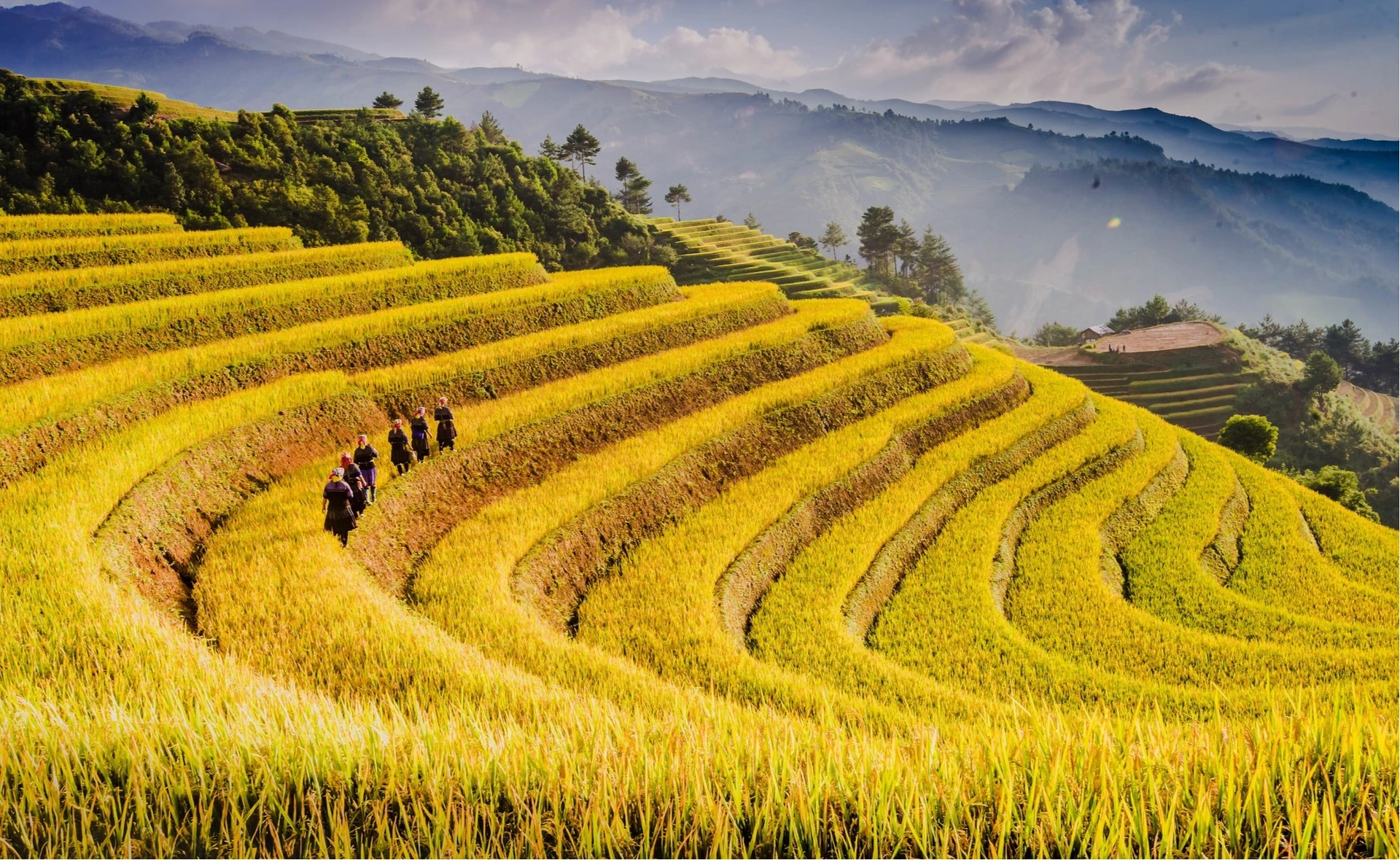Trekking the 'roof' of Mu Cang Chai in winter
Lung Cung Peak is 2,913 m high, in Mu Cang Chai district, is in the top 15 highest peaks in Vietnam, attracting climbers due to its beautiful scenery and easy-to-climb terrain with a length of 20 km. The peak is also an ideal place to watch the sunset and sunrise in the sea of clouds with a 360-degree view. In December, the weather turns cold, the maple forest on the top of Lung Cong turns red, low in the clouds, creating a colorful picture of nature. Visitors can start from three directions: Lung Cung village, Tu San village or Thao Chua Chai to get to the top. In particular, Tu San village is chosen by many people because the route to and from can visit the above two points, through many beautiful scenery. The climbing journey starts from steep, gentle hillsides, growing many cat apples. When entering the forest, the temperature changes, visitors can clearly feel the cold and humid air of the high mountains. The large shaggy trunks are covered with ghostly moss, but the top is brilliant with red leaves. Red-leaved maple is also known as maple, water maple, soft maple, scientific name is Acer rubrum. In the world, there are thousands of varieties of red-leaved maple based on the number of lobes and leaf color. This species is woody, perennial, 2-10 m high, planted in urban areas for shade. The closer to the top, the more red maple leaves appear. Maple in Lung Cung is a type of 5-petal leaf like in temperate countries, different from maple (later) which is abundant in the northeastern provinces such as Quang Ninh and Cao Bang. Arriving at Chua La Waterfall is also almost noon, many climbers choose this as a stop to admire the scenery and have lunch. According to the H'Mong language, "sour waterflies" are cliffs, "mules" are monkeys - only the waterfall area is where monkeys live. However, monkeys do not appear as much as squirrels and birds. After the rainy season, the waterfall pours a lot and clear, the vegetation is green, visitors can find many beautiful photo angles. Crossing the area of waterfalls and ancient maples, visitors will reach an open mountainside, where there are many dwarf rhododendrons and ferns. The total distance to climb Lung Cung is more than 20 km. The overnight shack in Lung Cong is located at an altitude of 2,400m, built on flat land. In winter, the temperature here can drop below 10 degrees. Porters (luggage carriers) group in the kitchen for guests to heat and prepare dinner. The sea of clouds floating over the mountains is the highlight when reaching the top of Lung Cung on favorable weather days. Even though it is sunny, there is still a lot of mist and clouds on the top, making the scenery like a fairyland. Guests pay attention to safety observation because the road has many steep, slippery and wet sections. It should not be too risky to take photos while at the top. Lung Cong is not too cold, the daytime temperature is about 15 degrees Celsius, the night is colder but not bitterly cold. Photo: Nguyen Trong Cung According to VnE

